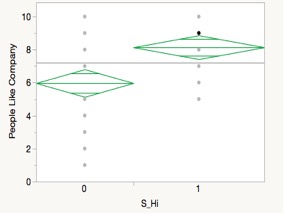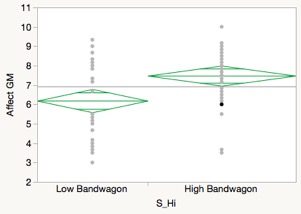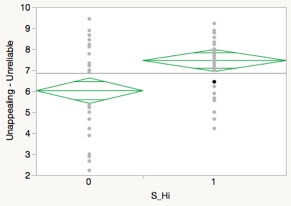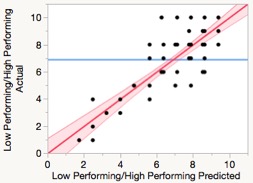Media Effects Research Lab - Research Archive
Bandwagon Cues and Perceived Attitudes
Student Researcher(s)
Alyssa Massari (B.A. Candidate);
Brooke Landon (B.A. Candidate);
Faculty Supervisor
This paper was based on a project as part of the “Comm 418: Media Effects” course.
INTRODUCTION
Social media plays a large role in today’s society. Various aspects of a social media page present viewers with cues that influence the way they perceive that page and how they form their attitudes regarding the company, group, or person that page represents. While there are various cues that contribute to a viewer's perceived attitude, this research will specifically focus on the bandwagon cue in the form of Instagram followers and how it influences the perceived attitudes of viewers.
RESEARCH QUESTION / HYPOTHESES
RQ: For college students, controlling for age and gender, what is the relationship between the bandwagon cue and their perceived attitude toward the company?
H1: Stimulus in the high bandwagon condition will be perceived as more credible.
H2: The high bandwagon condition will elicit positive affect.
H3: The high bandwagon condition will create perceptions of higher quality.
METHOD
Convenience sampling and a questionnaire were used to answer the research question and hypotheses. Standardized scales from Spears & Singh (2004) were used to assess authority cues, while credibility cues were assessed through both standardized and semantic differential scales. Participants were given no compensation for their participation in the study. Participants were randomly assigned to either the high or low stimulus condition, which were manipulated through the use of Adobe Photoshop. No incentive was given for participation in the study. A total of 79 undergraduate students at The Pennsylvania State University, between the ages of 18 and 23 years (M =20.91, SD =1.81), took part in an online survey. 75 out of the 79 participants completed the entire survey, therefore only data collected from the 75 participants were used. Participants were recruited through email and Facebook with a direct link to the questionnaire.
RESULTS
The means and standard deviations shown in the chart indicate that participants in the high bandwagon condition felt the page was more credible by answering questions in relation to likeability, popularity, trustworthiness, and relevance.
Once we established item-total reliability using the statistical software JMP, we were then able to run t-tests to better interpret the data for our questions regarding higher credibility, positive affect, and higher quality. For the first test on credibility, we found that people in the high bandwagon condition liked the page significantly more than those in the low bandwagon condition (t= 3.913, p= .0002).
 In Figure 2. there are similar results for the index of affect measures. We found that the high bandwagon condition elicited more positive affect in participants who viewed that stimulus. The results show a t-value of 3.243, and a p-value of 0.0018.
In Figure 2. there are similar results for the index of affect measures. We found that the high bandwagon condition elicited more positive affect in participants who viewed that stimulus. The results show a t-value of 3.243, and a p-value of 0.0018.

Finally, in Figure 3., the t-test results show significance of the high bandwagon condition creating perceptions of higher quality of the page (t= 3.587, p= 0.0006).


Presented in Figure 4., you will see the regression results returned to be very significant (RSq =0.77, p < .0001).
We believe this data shows the understanding that because of a mediator, the bandwagon cue is facilitated.
CONCLUSIONS/DISCUSSION
Due to the results of our data collection, we were successfully able to support all three of our hypotheses. Although we cannot say for sure, we can hypothesize a few explanations for additional mediators. In the high condition, participants saw a large number of followers and thus thought the company must be well-established and well-networked in order to have such an extensive fan base. Networking involves making positive impressions and connections to other companies or individuals. If the research involved a different demographic, we may expect to see different results for the fact that the information might be more likely to be processed systematically due to higher involvement in the actual product.
For more details regarding the study contact
Dr. S. Shyam Sundar by e-mail at sss12@psu.edu or by telephone at (814) 865-2173

